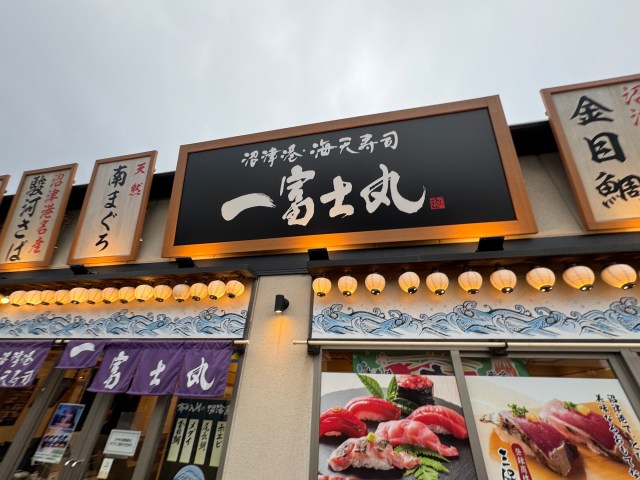
A visit to this restaurant that specializes in deep sea fish also teaches us that some of our favorite fish live deeper than we previously thought.
Numazu is a city nestled in Shizuoka Prefecture’s Suruga Bay, which happens to be the deepest bay in Japan at a depth of 2,500 meters (8,202 feet). Consequently, it’s famous for all things found in the deep, from the fish at the Numazu Deep Sea Aquarium to the deep sea pudding that we previously sampled. While our Japanese-language reporters Ikuna Kamezawa and Seiji Nakazawa were captivated by the gracefully swimming deep sea fish at the aquarium during their recent visit, they left with only one thought on their minds: “We want to eat you…”
▼ Who knew that learning about the ocean’s depths would spark such appetites?
The aquarium is located very close to the bay, and the surrounding area has plenty of sites of interest to tourists. For instance, Ikuna passed by a large market selling plenty of marine products, but she didn’t see anywhere that looked like it was selling deep sea fish. Actually, there weren’t that many places selling live fish to begin with–perhaps due to the time of the day or the season. Instead, it seemed like dried fish were the main attraction since they were on display pretty much everywhere.
That’s when they spotted a conveyor belt sushi restaurant called Numazu Port Kaiten-zushi Ichifujimaru. In some clever wordplay, the word “kaiten,” while being the term for “revolving,” was instead written using two kanji that mean “ocean heaven.”
The restaurant’s interior had a somewhat classy vibe, but the sushi was indeed revolving around on a belt.
For reference, the egg omelet sushi was 250 yen (US$1.59), the salmon 380 yen, and the tuna 480 yen. Those prices were definitely higher than at widespread conveyor belt sushi chains like Sushiro, but there’s nothing wrong with local places charging a bit more. It also seems to be a bit of a trend recently.
Ikuna asked the conveyor belt sushi expert, Seiji, for his opinion. He thought that these prices were completely normal for slightly “gourmet” conveyor belt sushi places that often emphasize the quality of the toppings as well as local specialties.
In any case, they proceeded to order some small plates of fish that seemed intriguing. First up was the largehead hairtail (tachiuo in Japanese), also known as the beltfish (440 yen), which happens to be one of Ikuna’s favorite fish in the whole world. Grilled, it absolutely melts in your mouth, and raw, it has a pleasant chewiness.
Next was the red sea bream/madai (380 yen). Even at cheap conveyor belt sushi places this fish tends to be a bit pricier than others, so Ikuna thought this was actually a pretty good deal.
Finally, they sprung for a plate of deep-fried greeneyes/mehikari (580 yen). These fish live at a water depth of around 500 meters, so they’re classified as a deep sea fish. While Ikuna is fond of small fish that are fried in general, these ones were light, almost fluffy, and especially delicious without even a hint of bitterness.
They thought about ordering the deep-fried “rising dragon-style” largehead hairtail (1,680 yen) based on the intriguing picture on the menu, but ultimately decided that it would be too much.
Now, though, it was time for the main attraction–Ichifujimaru’s Five Kinds of a Deep-Sea Fish Hand Rolled Sushi (1,380 yen).
▼ (Left to right) Black gnomefish, Pacific barrelfish, splendid alfonsino, longtail snapper, and whiskered velvet shrimp
The black gnomefish/kuromutsu was incredibly soft to the point that the two of them could have kept eating it forever.
Meanwhile, the Pacific barrelfish/medai was a lot firmer. It had a complex, deep flavor that was difficult to describe.
Ikuna has eaten splendid alfonsino/kinmeidai countless times before, but she never imagined in her wildest dreams that it was a deep sea fish. The fish was plump and tender with a refined taste.
The longtail snapper/onagadai was a bit sinewy with a hint of firmness and a taste that connoisseurs are bound to enjoy. Ikuna thought it was fascinating how different all of these fish tasted from each other. Even the whiskered velvet shrimp was on a completely different level than the kind that you can buy at a supermarket.
It’s not that Ikuna had never heard of these fish before going to Numazu, but she had never known that some of them are classified as deep sea fish. In her mind, it’s all the more reason to continue visiting local sushi restaurants and be a lifelong piscine learner.
Restaurant information
Numazu Port Kaiten-zushi Ichifujimaru / 沼津港・海天寿司 一富士丸
Address: Shizuoka-ken, Numazu-shi, Senbonminato-cho 83
静岡県沼津市千本港町 83
Open 11 a.m.-9 p.m.
Closed Wednesdays
Website
All images © SoraNews24
● Want to hear about SoraNews24’s latest articles as soon as they’re published? Follow us on Facebook and Twitter!
[ Read in Japanese ]